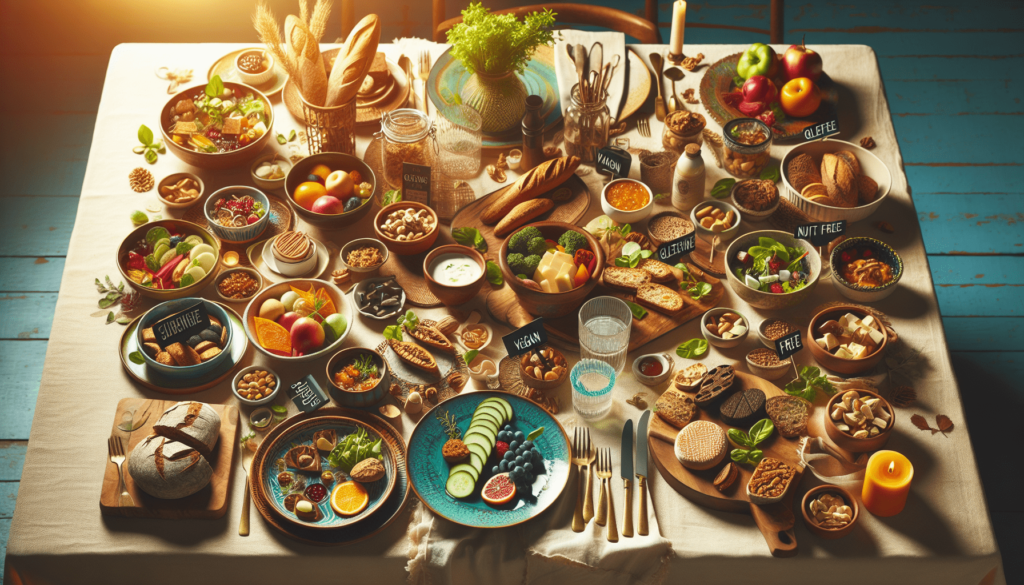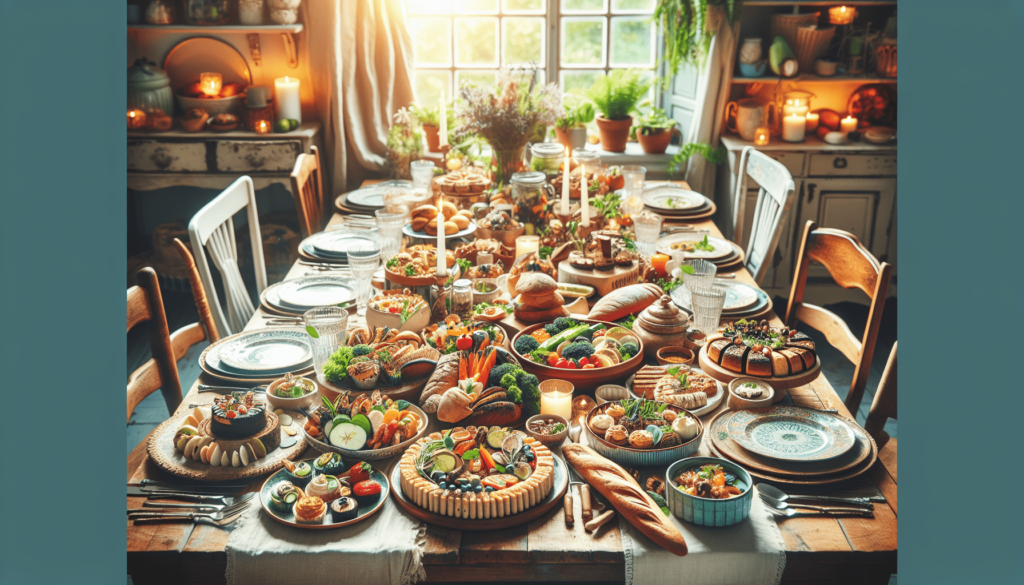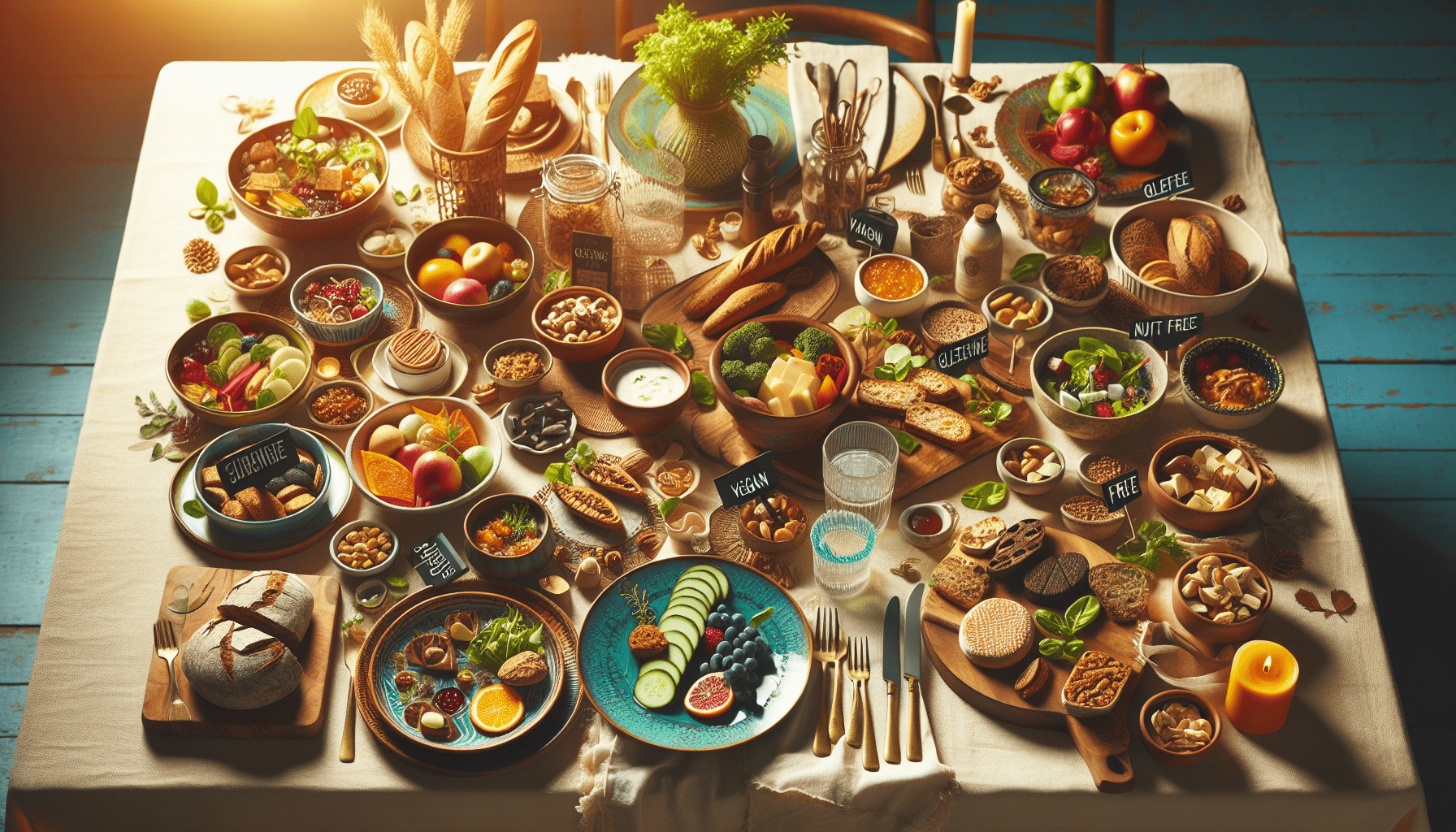Have you ever found yourself trying to figure out what to cook when your partner has a food allergy or dietary restriction? Navigating meals can be challenging enough on your own, but it becomes increasingly complex when you factor in another person’s unique needs and preferences. Let’s explore how you can handle these challenges while maintaining a happy and healthy relationship.

Understanding the Importance of Communication
Open Dialogue is Key
Your partner’s well-being largely depends on how well you communicate about their food allergies or dietary restrictions. Without proper communication, you might accidentally serve a dish that could cause them harm. Begin by having an open conversation where you invite your partner to explain their needs. Be attentive and ask questions. For example, what specific ingredients must they avoid? Are there any cross-contamination concerns?
Important Questions to Ask
Here’s a helpful list of questions you may consider:
| Question | Explanation |
|---|---|
| What foods make you sick? | Identifies specific allergens or intolerances. |
| What happens if you eat them? | Understands the severity of their reaction. |
| Are there safe substitutes? | Helps in meal planning and food prep. |
| Do you use an EpiPen? | Essential for preparing for emergencies. |
| How do you figure out if food is safe to eat? | Learns their strategies for reading labels or asking restaurant staff. |
By understanding these specifics, you can contribute to a safer dining experience.
Meal Planning and Preparation
Planning Ahead
Make meal planning a team effort. Sit down together each week to map out meals that are safe and satisfying for both of you. Incorporate your partner’s restricted items into your shopping list and try to find recipes that cater to both your preferences. Websites and apps designed to filter recipes by allergens or dietary needs can be especially helpful.
Safe Cooking Practices
When it comes to cooking, focus on avoiding cross-contamination. Use separate cutting boards, knives, and utensils for allergen-free dishes. Label these items clearly and store them separately if possible. A thorough cleaning routine can also help in reducing risks.
Tips for Cross-Contamination Prevention
- Separate Implements: Designate specific pans, pots, and cooking utensils.
- Clean Thoroughly: Regularly wash surfaces and cleaning implements like sponges.
- Label Everything: Clear, visible labeling helps in keeping allergens at bay.
- Be Mindful of Spices and Oils: Ensure that shared items like oils, spices, and condiments haven’t been contaminated with allergens.
Eating Out
Choosing the Right Restaurant
Choosing the right restaurant can be stressful, but it is important for a worry-free outing. Look for restaurants that cater to specific dietary needs. Many eateries now provide allergen menus or have staff trained to handle dietary restrictions. When in doubt, call ahead and ask about their capabilities.
Talking to Restaurant Staff
Once at the restaurant, make sure to communicate your partner’s needs to the server. Explain clearly and concisely what they can and cannot eat. Some useful phrases include:
- “My partner is allergic to peanuts. Does this dish contain any?”
- “Could you make sure this meal is prepared without dairy, please?”
Social Gatherings
Attending Events
Social gatherings can be extremely challenging when dealing with food allergies and dietary restrictions. From family reunions to friendly potlucks, you’ll want to ensure your partner has safe options available. Inform the host about your partner’s dietary restrictions beforehand and offer to bring a dish that your partner can eat.
Hosting Events
When hosting social gatherings, take the responsibility to ensure all guests, including your partner, have options available. Label allergens on dishes and consider preparing a few allergen-free recipes. Your effort will be greatly appreciated, and it will make the event enjoyable for everyone.

Traveling Together
Research Ahead of Time
Traveling introduces a host of new challenges. Research your destination to identify dining options that can accommodate dietary needs. Look for online reviews and forum discussions from people who have similar restrictions.
Packing Essentials
When traveling, it’s smart to pack some of your partner’s staple foods and snacks. This ensures that you’ll have safe options available no matter where you are. Some items to consider include:
- Gluten-free snacks
- Dairy-free milk alternatives
- Allergen-free protein bars
Emergency Preparedness
Knowing What to Do
Being prepared for an emergency can offer peace of mind. Know the symptoms of an allergic reaction, and ensure you have quick access to emergency items like antihistamines or an EpiPen.
Emergency Contact List
Create an emergency contact list that includes:
| Contact | Reason |
|---|---|
| Doctor | Medical guidance on treatment. |
| Pharmacy | Quick access to medications. |
| Local Emergency Services | For immediate medical emergencies. |
Make sure you and your partner both have this list handy. Knowing that you’re prepared can significantly reduce anxiety around food-related situations.
Building a Supportive Environment
Educating Others
Creating a supportive environment doesn’t just stop at home; it extends to your social circle. Educate friends and family about your partner’s dietary restrictions to foster a more supportive network. Here are some ways to spread awareness:
- Discuss openly during gatherings
- Share articles and resources
- Include them in meal planning
Emotional Support
Managing dietary restrictions can be emotionally exhausting. Offer your partner emotional support by validating their concerns and frustrations. Sometimes just listening and confirming that their needs are important can make a significant difference.
Maintaining a Positive Attitude
A positive attitude can make navigating these challenges more bearable. Celebrate the victories, like finding a new favorite allergen-free restaurant or successfully cooking a delicious, safe meal. Laughter and patience go a long way in turning a potentially stressful situation into a bonding experience.
Common Food Allergies and Dietary Restrictions
Knowing the most common food allergies and dietary restrictions can help you better prepare and be more considerate. Here are a few examples:
| Food Allergy/Dietary Restriction | Common Symptoms | Safe Alternatives |
|---|---|---|
| Peanut Allergy | Anaphylaxis, hives, swelling | Tree nut butters (if not allergic) |
| Gluten Intolerance/Celiac Disease | Digestive issues, fatigue | Gluten-free flours, rice, potatoes |
| Dairy Allergy/Intolerance | Cramps, bloating, diarrhea | Almond milk, coconut milk, soy milk |
| Shellfish Allergy | Breathing issues, swelling | Fish (if not allergic), tofu |
| Vegan Diet | Ethical/environmental reasons | Plant-based proteins like tempeh, lentils |
Conclusion
Navigating food allergies and dietary restrictions in relationships can be complex, but it also provides an opportunity for growth and connection. With clear communication, thoughtful planning, and mutual support, you can create an environment where both of you can enjoy food safely.
Building a relationship that thrives despite the hurdles of food allergies and dietary restrictions is not just about freedom from danger—it’s about love, respect, and understanding. Take the first step today, and set the table for a harmonious dining experience.
